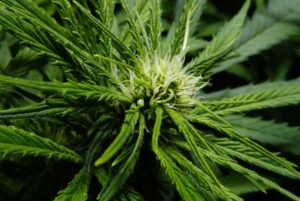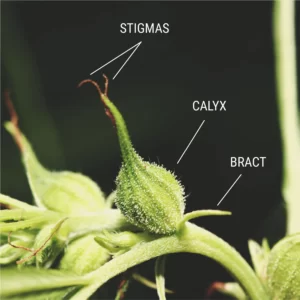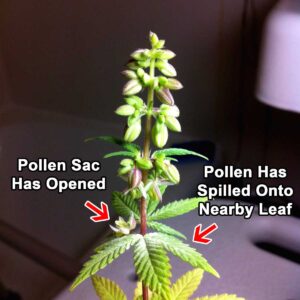
First Signs Of Flowering Stage Cannabis plants go through several key steps during their lifespan: they develop from seedlings into full-grown buds before reaching their potential in terms of producing trichomes during flowering.
Within the first week of flowering, plants begin to expand and produce white hairs resembling whiskers known as pistils – this allows growers to determine whether their plant is male or female.
Pistils

Pistils, the small white hairs that form on cannabis plants during flowering, serve both gender identification and as an early marker of the blooming phase. New growers may find seeing these wispy “hairs” grow exciting! However, auto-flowering strains or light cycles with 10 hours on and 14 hours off cycles that force flowers to mature faster may result in earlier coloring of pistil hairs than expected.
Feminized plants will only show these hairs in female buds; however, non-feminized ones might show pink and red pistils which do not indicate flowering; this occurs as a result of chemical changes to trichomes caused by flavonoid pigments known as anthocyanins which give blueberries, cherries and red onions their characteristic hue.
Around week four, signs of flowering should become evident across various cannabis strains. Stigmas will continue to form and reach lighter shades of orange while calyx formations grow thicker to mimic buds sites. At this stage it is crucially important that plants are monitored for any excessive feeding as too much may cause premature discolouration and drying out of buds due to overwatering.
Bracts
Once cannabis plants enter flowering stage, they will develop bracts – small green sacs filled with pollen that look similar to small balls – known as bracts. Hermaphrodite plants will also produce stamens (male parts of plant), which produce stamen sacs which resemble balls filled with pollen – it is important that during flowering all female plants are pollinated as this helps ensure pollination rather than seeding occurs. Identifying their gender before flowering ensures only female plants are pollinated rather than seeded.
At this stage of their growth cycle, your marijuana plants must remain healthy. Their primary focus will be forming buds at this point and any deficiencies or inadequacies will be more apparent than later in their cycle. Discolored leaves at this stage could indicate nitrogen deficiency while dark and clawing branches could signal nutrient burn.
Maintain a clean and stable growing environment at this stage as any contaminants could inhibit the budding process. When your plants reach flowering stage, using Bergman’s Flowering Set of nutrients would be wise.

Calyxes
As days get shorter, cannabis plants begin to enter their flowering stage naturally, meaning that they stop growing and instead direct their energy towards producing buds for harvest. When this stage occurs depends on your strain but typically takes place near the end of summer outdoors or when switching lights to 10-12 hours of darkness per day for indoor grows.
The calyx (pronounced kal-s) is an assembly of green leaf-like structures that enclose unopened flower buds and extend from the base of plants, forming an outer covering for reproductive organs inside flowers. Together with corolla petals they comprise perianth (outer covering).
Calyx cells contain high concentrations of resin, providing an indicator of plant health and harvest readiness.
Pollen sacs

This week, your cannabis plant will start producing pollen sacs – appearing as wispy white hairs at the top of its leaves – that will develop into flowers with characteristic aroma. As they do so, their pollen sacs will grow into buds which produce their signature smell via trichomes on their petals.
Flowering stages will involve your plants transitioning away from vegetative growth. As they focus on producing high-grade buds, their height may increase while stretching as if utilizing LST (low stress training) techniques or other forms of training is necessary.
At this stage, it’s also necessary to adapt your nutrient formula accordingly and switch it out for something suitable for flowering stage plants – specifically one with increased flowering-enhancing components, like phosphorus and nitrogen. Furthermore, keeping them in an environment free from disease or pest problems that might interfere with producing quality buds is key for their overall wellbeing.
Buds

At this point, flowering begins in full force and you can start to witness its progress with buds “swelling out” to form more rounded shapes. Now is an especially critical time to monitor your plants carefully to make sure that any stress on them (whether caused by pests, diseases, improper nutrition, or environmental factors) won’t compromise the quality of harvests and cause serious repercussions for harvest quality.
As your plant enters flowering phase, its buds will continue to increase in size while its white hairs soften to become pale, milky or translucent as its hue changes toward light amber. Most growers consider harvest ready at this point.
